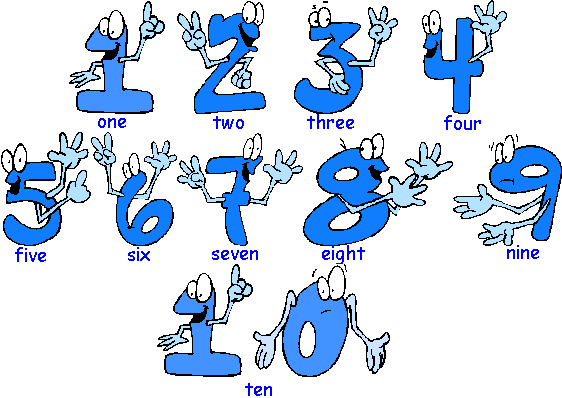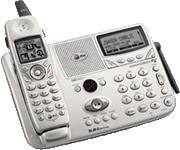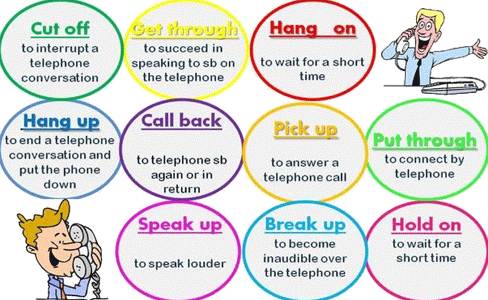CÓMO HABLAR POR TELÉFONO EN INGLÉS
![]() Esta Guía forma parte de un
conjunto de recursos e ideas
que te ayudarán a aprender y mejorar el inglés.
Esta Guía forma parte de un
conjunto de recursos e ideas
que te ayudarán a aprender y mejorar el inglés.
Una conversación telefónica en inglés requiere de ciertos convencionalismos (sobre todo si se trata de un entorno comercial o de negocios) y tiene la dificultad añadida de no poder interactuar directamente con nuestro interlocutor.
Vamos a facilitarte una serie de técnicas y de recursos que te ayudarán a la hora de mantener una conversación de forma fluida y efectiva.
En esta Guía se plantean también algunos casos prácticos en
forma de ejercicios. El objeto de los mismos es facilitar que puedas ejercitar
los planteamientos teóricos que se exponen.
En esta Guía también hemos incluido diversos ejemplos en audio que puedes escuchar a través de los iconos
![]() o
o
![]() .
Si tienes problemas para escuchar, consulta las
FAQ.
.
Si tienes problemas para escuchar, consulta las
FAQ.
Dispones de las soluciones a ejercicios propuestos a través de los iconos ![]() o
o
![]()
Esta Guía es una referencia para perfeccionar un apartado concreto del inglés conversacional y supone que dispones al menos de un nivel intermedio. Si tienes dificultades, puedes seguir nuestros Cursos Generales de Inglés gratuitos. Puede también consultar nuestra Guía: Cómo aprender Inglés sin esfuerzo.
1) DELETREAR (Spelling)
Vas a tener que recurrir muy habitualmente a deletrear nombres, direcciones, etc., por lo que es necesario que tengas fluidez en la pronunciación de las letras del alfabeto o de los números en inglés:
ESCUCHA LA PRONUNCIACIÓN DEL ALFABETO EN INGLÉS.
· Debes familiarizarte con la pronunciación del alfabeto inglés, por lo que es conveniente que lo escuches tantas veces como necesites.
 |
 |
 |
 |
 |
 |
 |
 |
 |
 |
 |
 |
 |
 |
 |
 |
 |
 |
 |
 |
 |
 |
 |
 |
 |
 |
 |
 |
 |
 |
 |
 |
 |
 |
 |
 |
 |
 |
 |
 |
 |
 |
 |
 |
 |
 |
 |
 |
 |
![]() Escucha las letras del alfabeto inglés y repítelas.
Escucha las letras del alfabeto inglés y repítelas.
![]()
![]() Ahora repite las letras otra vez pero en grupos del mismo sonido vocal.
Ahora repite las letras otra vez pero en grupos del mismo sonido vocal.
![]()
|
|
|
|
|
|
|
|
||||||
| A | B | F | I | O | Q | R | ||||||
| H | C | L | Y | U | ||||||||
| J | D | M | W | |||||||||
| K | E | N | ||||||||||
| G | S | |||||||||||
| P | X | |||||||||||
| T | Z | |||||||||||
| V |
![]() Escucha y lee el siguiente diálogo en un hotel
Escucha y lee el siguiente diálogo en un hotel ![]()
| Lo fundamental en este diálogo es que veas una aplicación práctica del spelling (deletreo) muy común en los países de habla inglesa pues, a diferencia del español, la representación escrita y la pronunciación figurada de las palabras en el idioma inglés puede ser muy distinta. |
| R=Recepcionista A=Angeles
R - Good afternoon. Can I help you? |
ESCUCHA LA PRONUNCIACIÓN DE LOS NÚMEROS EN INGLÉS.
· Debes familiarizarte con la pronunciación de los números en inglés, por lo que es conveniente que lo escuches tantas veces como necesites.
![]() Lee los números, escúchalos y repítelos
Lee los números, escúchalos y repítelos
![]()

![]() Whats your phone number? /¿Cuál es tu número de teléfono?
Whats your phone number? /¿Cuál es tu número de teléfono?
 -
¿Cómo se dice el número cero (zero) en inglés?
-
¿Cómo se dice el número cero (zero) en inglés?
- ¿Cómo se dicen dos números iguales que van juntos?
- 0715 255 6099
My phone number is
Her phone number is
His phone number is
Their phone number is
My credit card number is
![]()
2) TRATAR CON TU INTERLOCUTOR
Debes distinguir el trato que debes dar a tu interlocutor para
dirigirte correctamente a la persona con la que hablas. En inglés, existen
diferentes tratos entre Mr, Mrs, Miss y Ms. 
- Mr. Se usa en general para hombres, independientemente de su condición de casados o solteros.
- Ms. Significa "señora", "señorita". Se utiliza cuando
nos referimos a una mujer e ignoramos su estado civil (si está casada o no)
Es la forma más común para referirnos a una persona del sexo femenino.
Generalmente se usa junto con el apellido o con el nombre y apellido.
- Mrs. Significa "señora". Se utiliza cuando nos referimos a una mujer casada. Es un término formal. Generalmente, se usa junto con el apellido de casada (en los países anglosajones, la mujer casada suele adoptar el apellido del marido).
- Miss. Significa "señorita". Se utiliza cuando nos referimos a una mujer soltera. Es un término formal. Generalmente, se usa junto con el apellido o con el nombre y apellido.
3) REGLAS GENERALES EN UNA CONVERSACIÓN TELEFÓNICA
- Siempre identifícate previamente a ti mismo y a tu empresa (en
caso de que la conversación esté enmarcada dentro de un contexto comercial).
- Habla de forma pausada. Ello ayudará a que tu interlocutor te entienda mejor y
a que él también hable en un tono más comprensible.
- Habla siempre con corrección. En general, es una recomendación válida para
cualquier contexto pero en una conversación en inglés es habitual que la misma
se desarrolle en un tono respetuoso.
- Dirígete a tu interlocutor siempre con su apellido y tratamiento si no tienes
suficiente confianza.
4) CONTEXTO GENERAL DE UNA CONVERSACIÓN TELEFÓNICA
- Dentro del contexto de una conversación telefónica, hay un conjunto de palabras y frases habituales que generalmente deberás emplear y que te será de gran utilidad conocer.
· Identifying yourself
Hi, it’s ……… speaking.
Hello, This is ……..
Good morning, my name’s ……..
· Reason for phoning
I’m ringing to let you know…..
to ask if…..
to find out if…..
because I was wondering if…..
· Asking for people
Could you put me through to …………, please?
I’d like to speak to ………
Is ……… there, please?
· Asking for things
Could you…..(+infinitive without to) 
Ex. Could you ring me back later.
Could you tell me….
Would you mind………(+ing)
Ex. Would you mind sending me some information.
· Giving your phone number
My number is …………
You can get me on …………..
· Ending the conversation
Thank you for calling. Goodbye.
Thanks a lot then. See you.
Thanks for phoning. All the best. Bye.
![]()
![]() Read the expressions, listen and repeat.
Read the expressions, listen and repeat.
![]() The phrases below are from two different telephone calls, but they are in the wrong order.
Put the lines in the most logical order. The first and last lines have been done for you.
The phrases below are from two different telephone calls, but they are in the wrong order.
Put the lines in the most logical order. The first and last lines have been done for you.

![]()

![]()

![]() Now Listen to
the conversations to check.
Now Listen to
the conversations to check.
![]() Listen again and practise the conversations.
Listen again and practise the conversations.
|
|
|
|
|
|

![]() Listen to four telephone calls and decide which of the following
four criticisms of the person receiving the
calls is most suitable.
Listen to four telephone calls and decide which of the following
four criticisms of the person receiving the
calls is most suitable.
![]()
|
|
 |
|
|
 |
|
|
 |
|
|
 |
|
|
 |
|
|
 |
|
|
 |
![]()
 Listen
and repeat the expressions.
Listen
and repeat the expressions.
 |
|
![]()
 Listen to a telephone conversation and complete the information.
Listen to a telephone conversation and complete the information.
|
Caller's Name:
Company: Telephone / fax: Message: Action: Taken by: Tania López Date: 24th March 2005 |
 |
|
![]()
 Listen again and
read the
transcription.
Listen again and
read the
transcription.
 |
|
![]() Listen to five recorded messages and decide what the message is about.
Listen to five recorded messages and decide what the message is about.
![]() Listen again and answer the questions.
Listen again and answer the questions.
![]() Listen again and
read the
transcription.
Listen again and
read the
transcription.
|
|
|
En un contestador automático...
Grabe su mensaje para las llamadas
entrantes solicitando de forma concreta la información necesaria
cuando sea relevante. - We are not here at the moment. Please leave your name, your company and your phone number after the tone and we'll call back as soon as possible. o bien un mensaje general: - We are unable to take your call at the moment. Please leave your message after the tone. Para dejar un mensaje: - I'm returning your call. |
|
|
|
to receive a call: recibir una llamada |
5) DIFERENCIAS DEL INGLÉS BRITÁNICO Y EL INGLÉS AMERICANO
| INGLÉS BRITÁNICO | INGLÉS AMERICANO |
| - Los números suelen ir separados por espacios. 34 123 279 486 |
- Los números suelen ir separados por guiones. 34-123-279-486 |
| - "0" (cero) se pronuncia como "oh" | - "0" (cero) se pronuncia como "zero" |
| - Se pronuncia "Double" o "Triple" para números que se repiten. 2-617-633-7754 = "Two, six one seven, six double three, double seven five four" |
- Cada número se pronuncia por separado. 2-617-633-7754 = "Two, six one seven, six three three, seven seven, five four” |
| - The line is engaged. | - The line is busy |
 British English |
 American English |
|||
|
To ring (s.o.)
To ring up (s.o.) To ring (s.o.) up To give someone a ring |
To call (s.o)
To call up (s.o) To call (s.o.) up |
|||
| To give (s.o.) a bell To give (s.o.) a buzz |
|
informal | (s.o.= someone) |
|
6) TELEPHONE PHRASAL VERBS

![]()
![]() Match the phrasal verbs on the left with the correct meanings. Follow the
example.
Match the phrasal verbs on the left with the correct meanings. Follow the
example.
![]()
![]() Decide if the following sentences are true or false.
Decide if the following sentences are true or false.
![]()
![]() Complete the following sentences with a phrasal verb from exercise 1 in
the correct tense.
Complete the following sentences with a phrasal verb from exercise 1 in
the correct tense.
|
1. I don’t have my accountant’s
number with me, but I’ll it
when I get home and I’ll
you.
2. It’s not easy to to the hospital. The line’s always busy. 3. I’m afraid I can’t hear you, can you please? 4. Just a moment sir, I’m you to our sales department. 5. Hello, it’s me again, I think we got . 6. This is a terrible connection. Look, why don’t you and I’ll you . 7. I’m afraid Mr. Gomez isn’t at his desk at the moment. If you’d like to for a moment, I’ll see if I can find him. 8. I wish someone would the phone. It’s been ringing for ages. |
 |
Transcription
 |
- I’ll give Simon a ring and see if he’s busy.
- Can you ring me tomorrow morning? - When’s a good time to give you a ring? - I’ll give you a buzz as soon as I get to the hotel. - What time is she going to phone? - Call me sometime. - Would you mind ringing Jane for me and see if she’s finished the report? |
* Accede a más Phrasal Verbs en inglés.
 |
|
Telephone English
Reza and Craig agree that speaking on the phone in a foreign language is one
of most difficult things to do. You can’t see the other person, so you have
no body language, hand gestures or facial communication.
* Accede a más Podcast en inglés.
· RECURSOS
- Descarga e imprime nuestras Fichas de inglés. Aprenderás los conceptos necesarios y esenciales en inglés de forma resumida, para que puedas tener siempre a tu alcance la información más importante que necesitas aprender o recordar.
En nuestra web cuentas con muchos recursos que te ayudarán. Accede a nuestra guía orientativa para conocerlos.
 |
un conjunto de recursos e ideas que te ayudarán a aprender y mejorar el inglés. |
TAMBIÉN TE PUEDE INTERESAR:
![]() ¿Quieres recibir en tu e-mail gratis y
periódicamente ejercicios, programas gratuitos, explicaciones y otros recursos
para mantener tu inglés sin esfuerzo? Apúntate a nuestro
cuaderno mensual de inglés.
¿Quieres recibir en tu e-mail gratis y
periódicamente ejercicios, programas gratuitos, explicaciones y otros recursos
para mantener tu inglés sin esfuerzo? Apúntate a nuestro
cuaderno mensual de inglés.
La Mansión del Inglés. https://www.mansioningles.com
© Copyright La Mansión del Inglés C.B. - Todos los Derechos Reservados . -

¿Cómo puedo desactivar el bloqueo de anuncios en La Mansión del Inglés?











